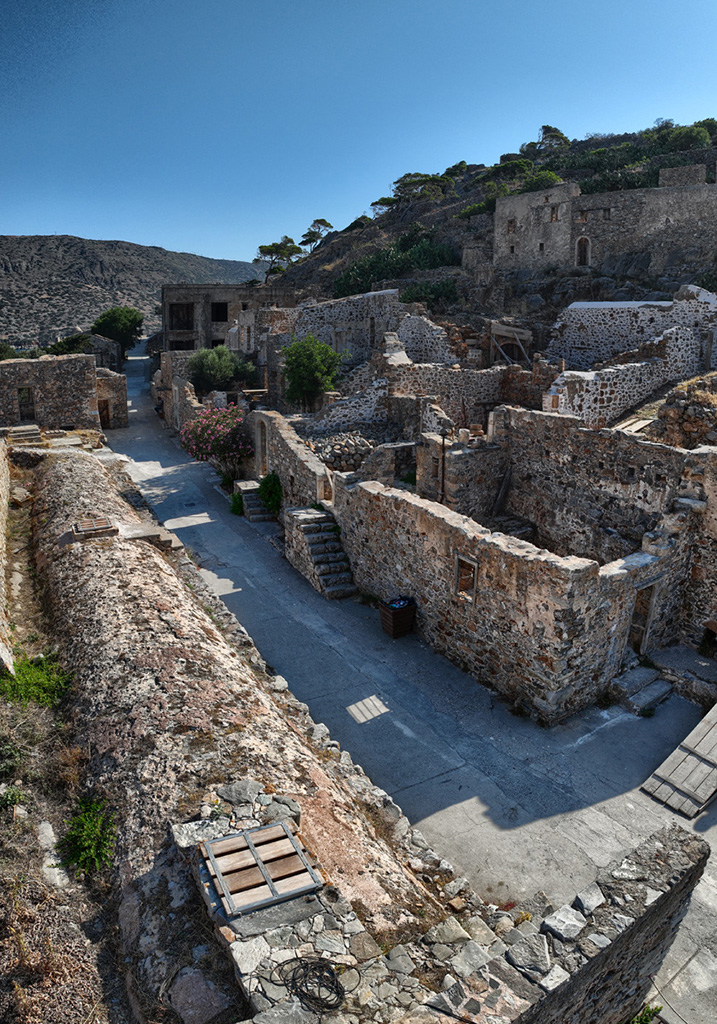Cisterns in front of Saint Panteleimon. . ©Ephorate of Antiquities of Lasithi.
Vaulted cisterns
The cisterns that collect rainwater have had and continue to have vital importance for the people of Spinalonga, as the island does not have water springs. The most significant cisterns are located on the western side.
At the level of the church of Saint Panteleimon and near the garrison building, there are dual-chambered cisterns, semi-subterranean, are vaulted, and have water extraction openings. Their supply was mainly achieved using conduits mainly from the roof terraces or the vaults of neighbouring buildings and even from the surface waters of the central road.
The Riva cistern, named after the Provisioner of the fortress, Giacomo Da Riva, is constructed during the late Venetian period in the southwestern part of the inner enclosure, near the Carbonana gate, to solve the issue of the fortress's water supply. It is built leaning against the western wall, remaining open on the other sides adjacent to the central road. During the Ottoman era, it is surrounded by two-story shops. Rainwater falling from the nearby buildings’ roof terraces, the cistern's own roof, and the conduit along the southwestern transverse wall supply this cistern with water.
The cistern located north of the church of Saint Nicholas has small dimensions and a construction similar to the other cisterns on the island. It collected rainwater from the vault of the neighbouring gunpowder magazine and possibly from the roof of the church of Saint Nicholas. This cistern supplied water to the residence of the fortress's Provisioner in Spinalonga.
Photo Gallery
The cisterns in front of Saint Panteleimon. ©Ephorate of Antiquities of Lasithi.
The cisterns near the garrison building ©Ephorate of Antiquities of Lasithi.






